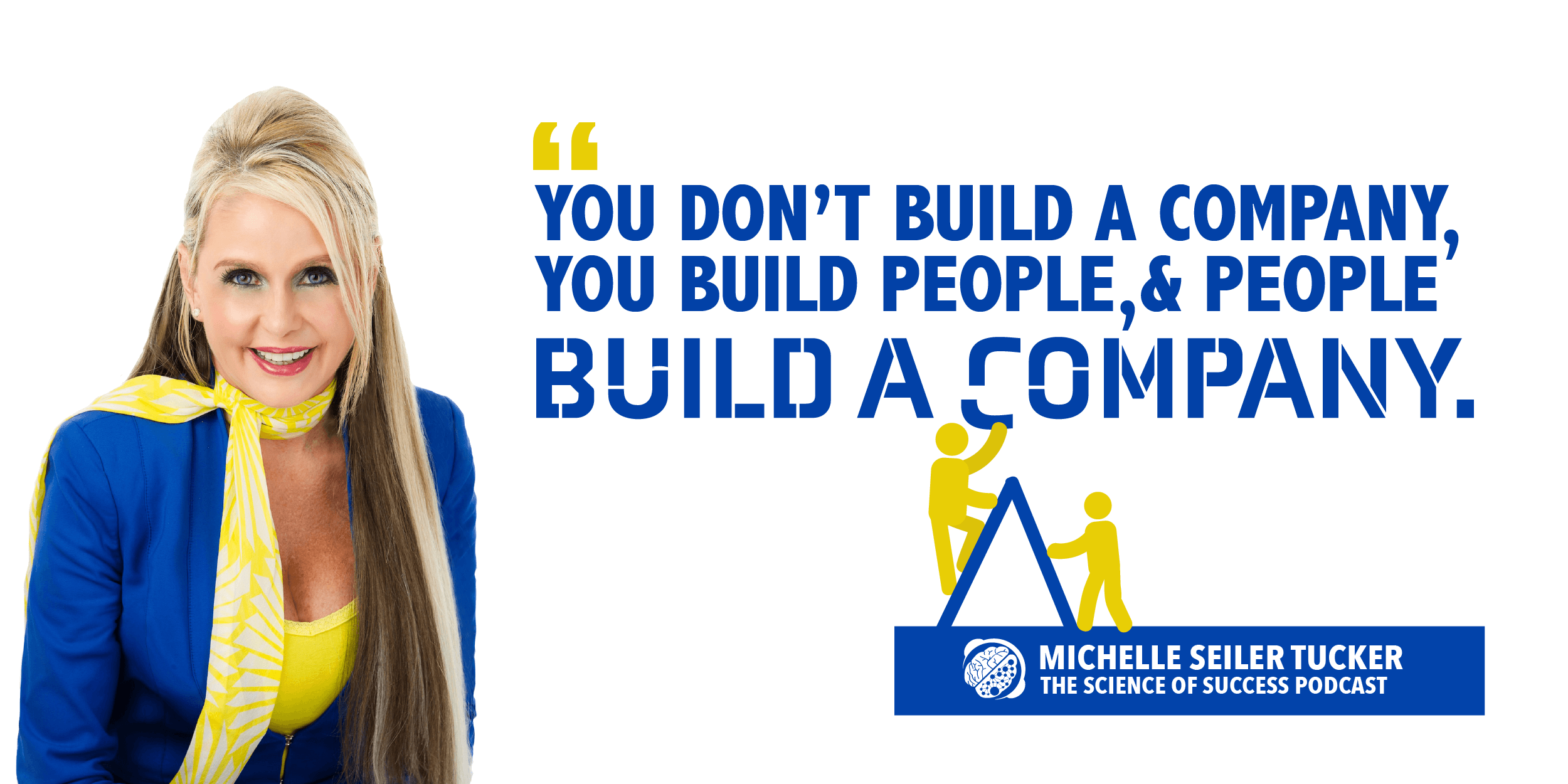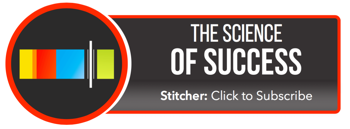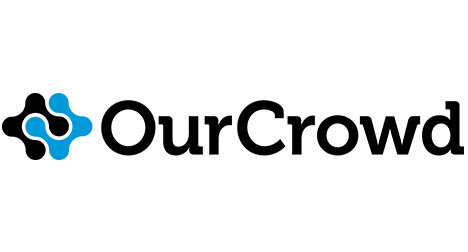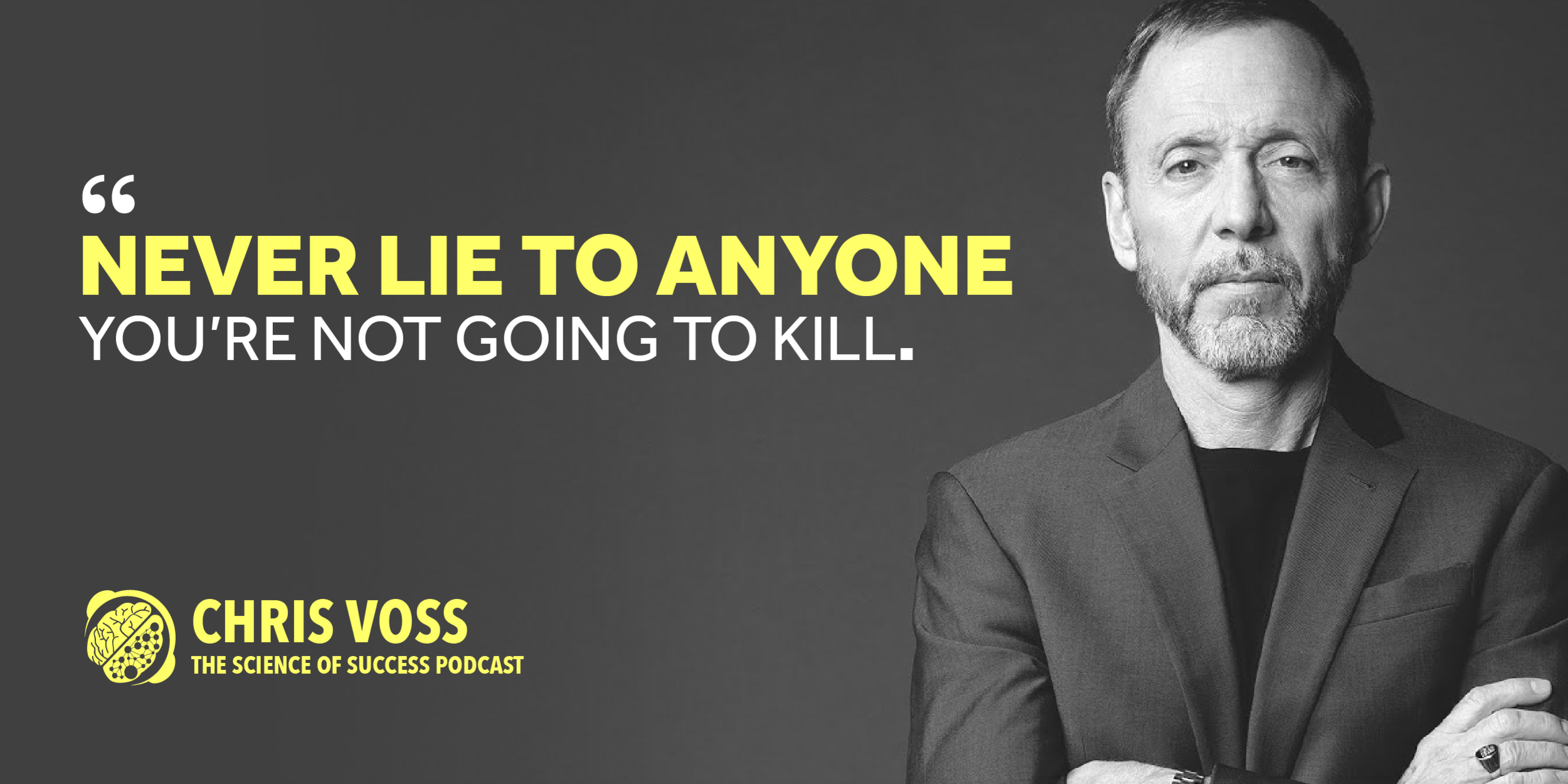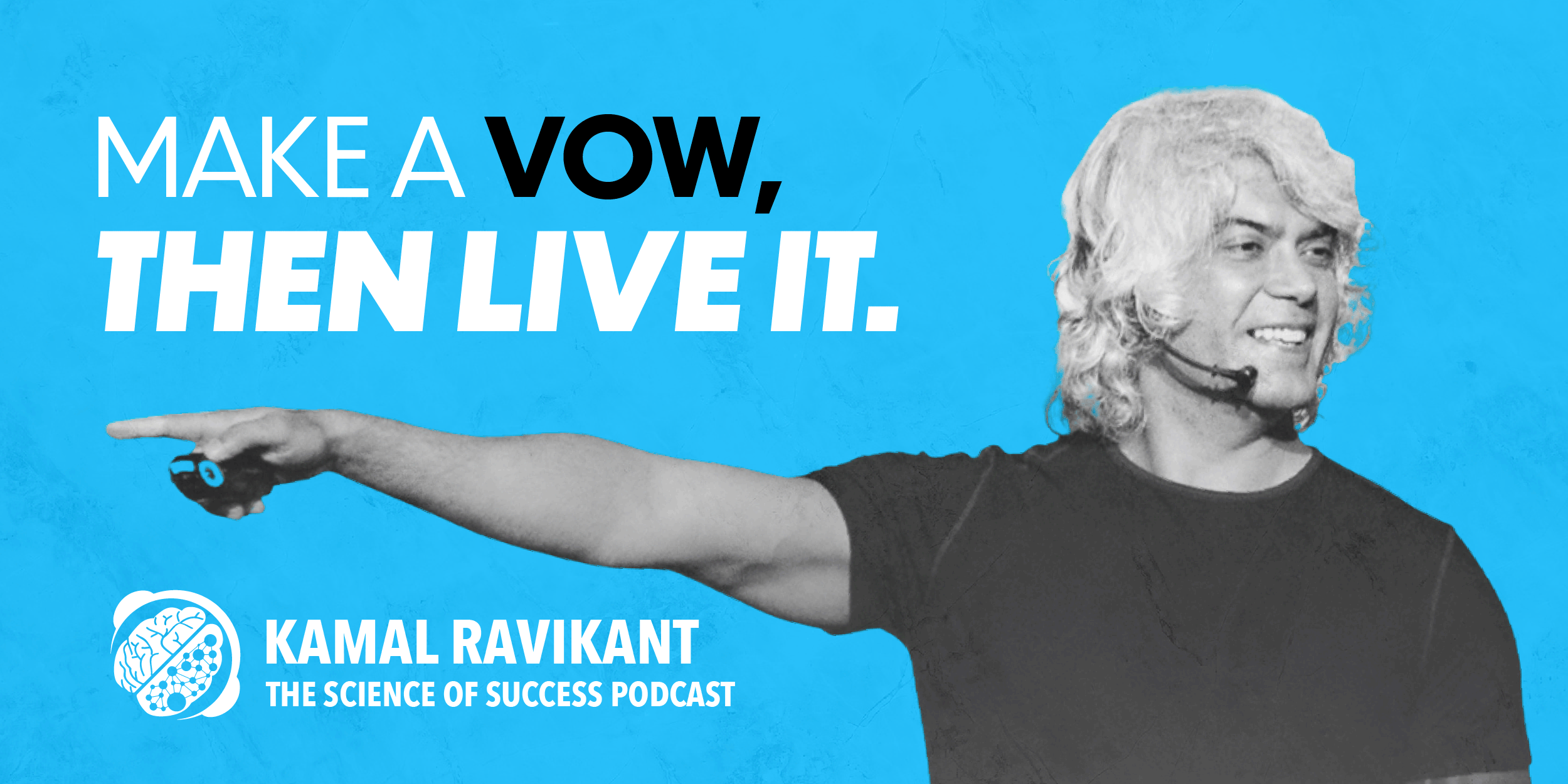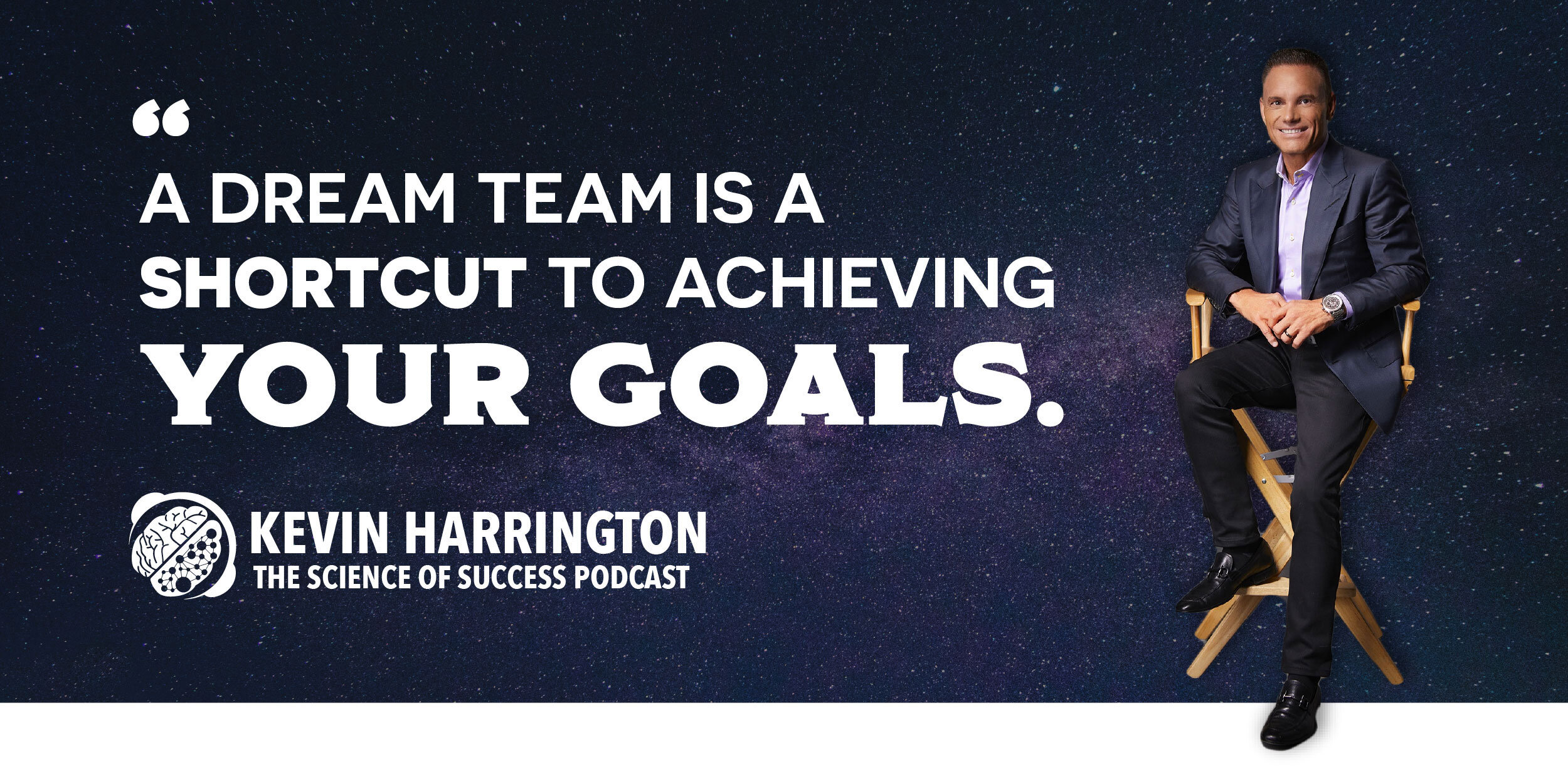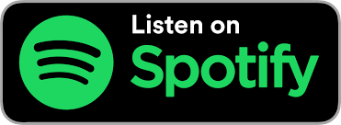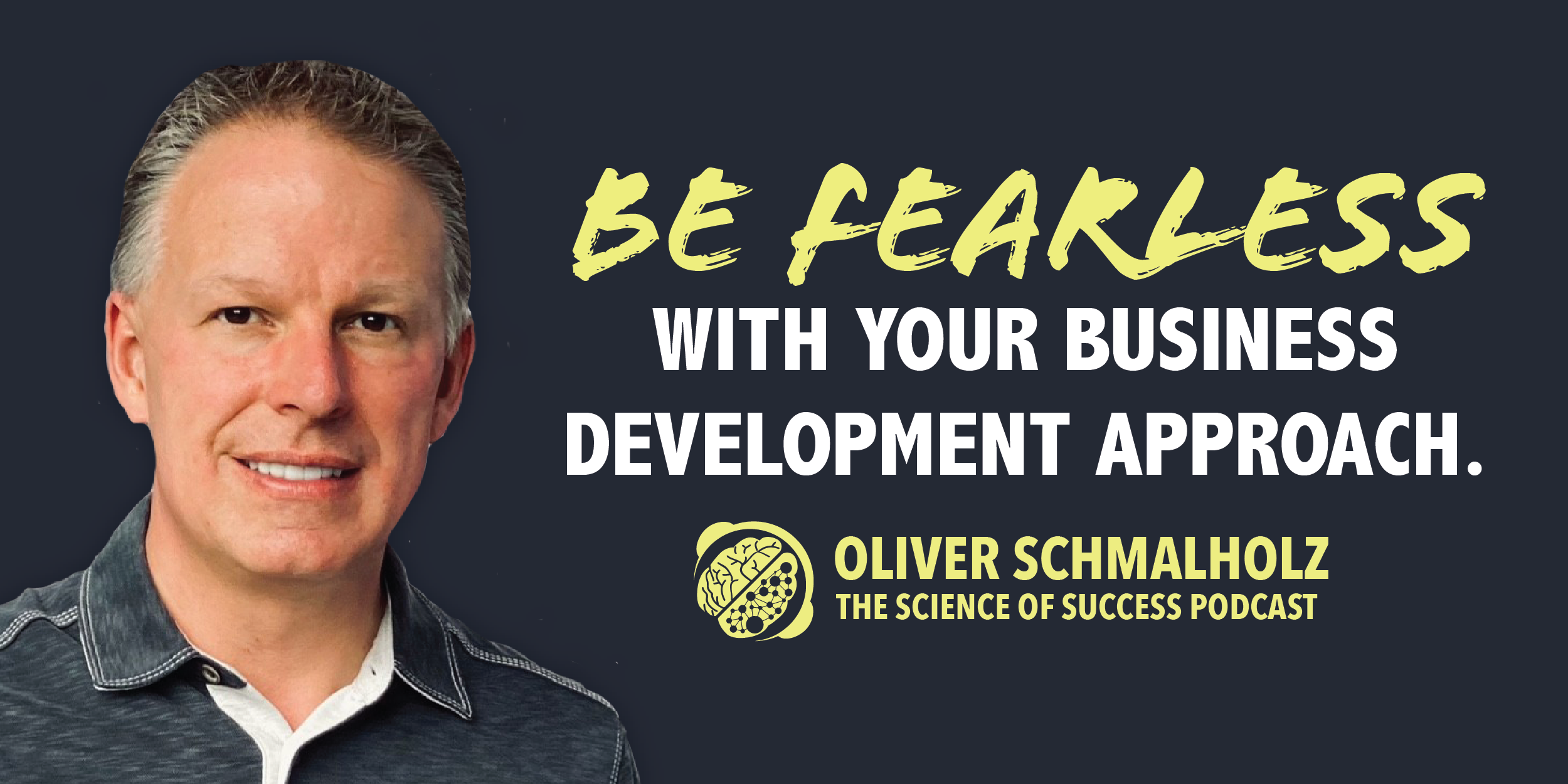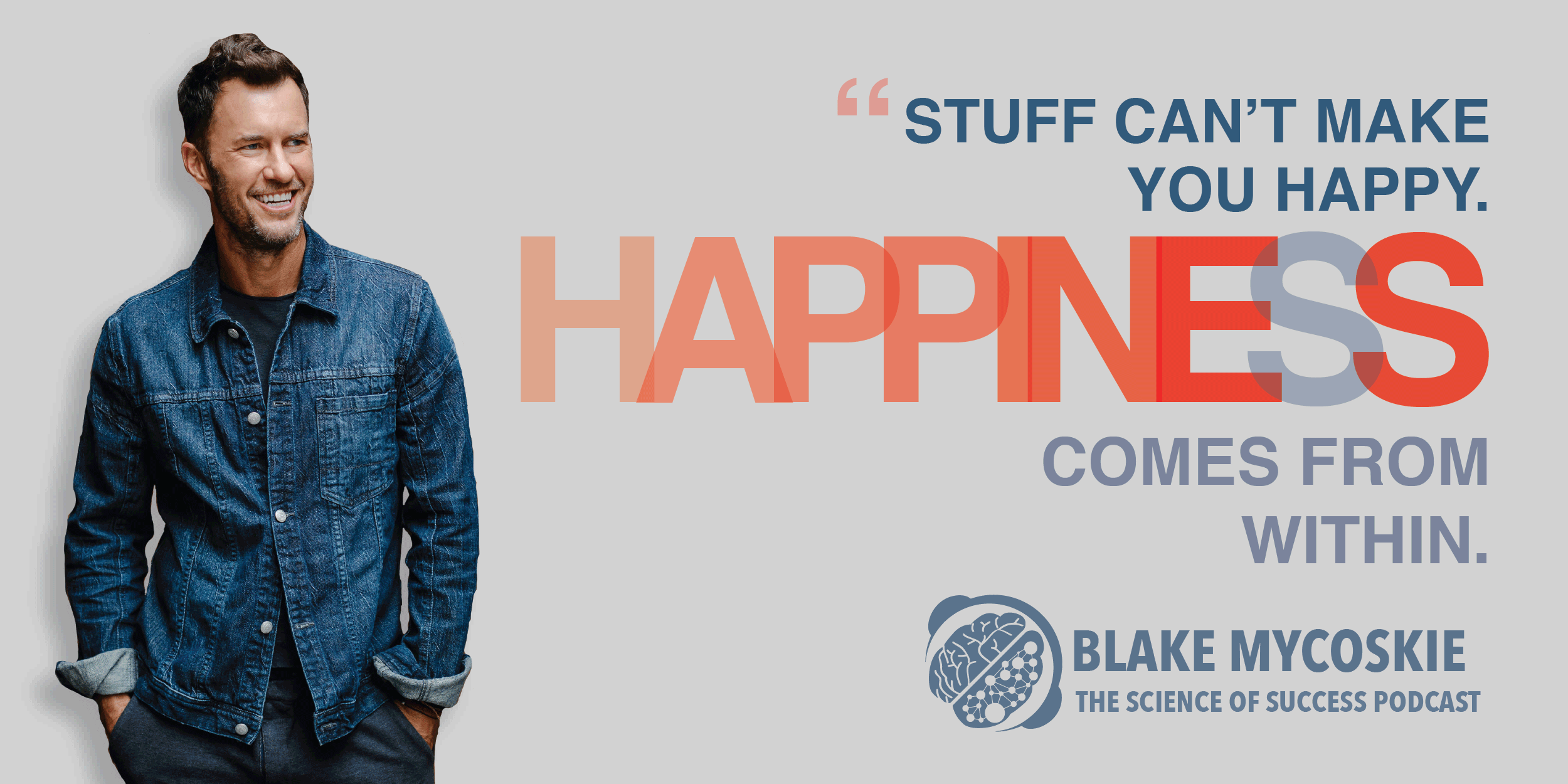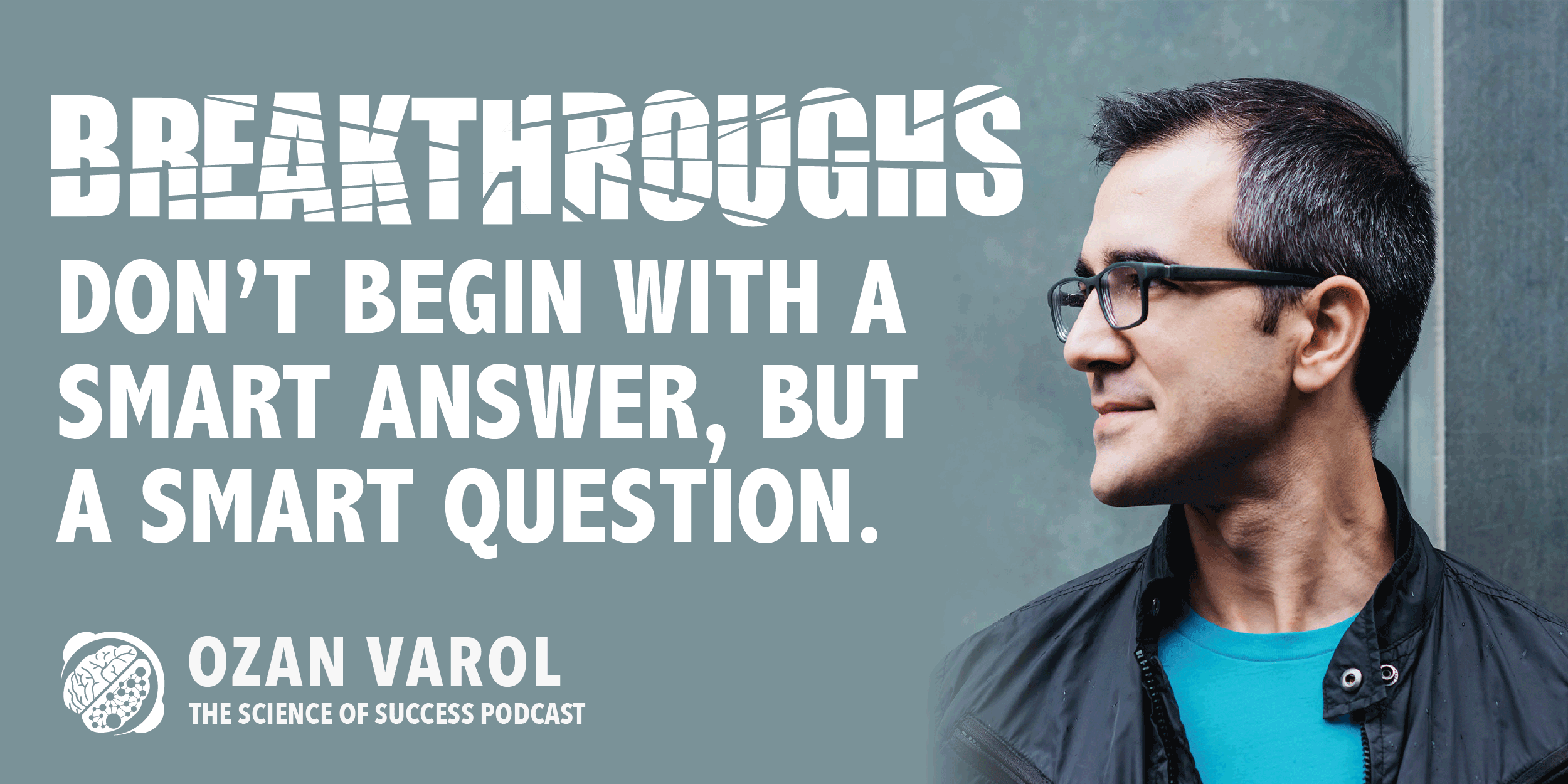The Devastating Truth About The Future of Jobs & What You Can Do About It with Jeff Wald
In this episode, we discuss the surprising future of work, the truth about robots, automation, and jobs, and how you can best position yourself for a successful career within the future of work with our guest Jeff Wald.
Jeff Wald is a serial entrepreneur and the Founder of WorkMarket and Spinback, as well as several other businesses, and has exited companies to ADP and Salesforce. He is an expert on labor and the future of work, and the author of The End of Jobs: The Rise of On-Demand Workers and Agile Corporations. Jeff is also an angel investor and startup advisor and serves on numerous public and private Boards of Directors.
Work has always been changing and evolving.
Today, the number of hours worked continues to decrease across the globe.. in conjunction with an increase in our standard of living.
2019 was the best year to be alive as a human, bar none. It was the best year ever for humanity. Covid is likely a statistical blip.
There are 17mm robots on the planet today. Robots are dumb, clumsy, and expensive. Robots and AI will certainly displace a VERY large number of jobs, the data tells you when you analyze job function by function, over 700 job functions, 10-15% of jobs over the next 20 years or so, will slowly go away.
More jobs will be created than we lose over the next 20 years
The big challenge is not the jobs that will leave, the challenge is retraining
The five most dangerous words in business are “this time it’s different.”
What is the “labor equation” and how does it impact the decision-making of companies hiring and staffing jobs in a world of disruptive technological change?
How ATMs transformed the banking industry in a way that you would not at all expect.
What are co-bot jobs and how do they shape work?
How does on-demand labor factor into the future of work?
On-demand labor has been a part of the economy for a long time
The mistaken myth of lifetime employment - it was a notion, not a reality.
In 2020 the average worker spends 4.2 years in a job. In 1960 at the height of the “golden age of lifetime employment” was 5 years.
The labor market moves very slowly and the changes take place very slowly over time.
How do we deal with the challenge of retraining our labor force?
Who owns this problem?
Individual workers?
Companies?
Schools?
Societies?
Technology?
25 million workers in the US are going to have their jobs disrupted over the next 20-25 years.
To get a sense of this disruption, look at the manufacturing industry which has lost around 8mm jobs since 1980
What should we do to stay nimble, keep our jobs, and succeed in this future of work?
You MUST be a lifelong learner to succeed in the future work world.
Skill used to be useful in the workplace for 30 years, today it's 4-6 years before a skill is rendered obsolete.
Several shocking predictions about the future of work for the next 20 years.
Thank you so much for listening!
Please SUBSCRIBE and LEAVE US A REVIEW on iTunes! (Click here for instructions on how to do that).
KiwiCo delivers hands-on science and art projects for kids of all ages. Everything needed to spark curiosity and kindle creative thinking, which makes KiwiCo the perfect gift!
With KiwiCo, kids can engineer a walking robot, design a paint pendulum, conduct bubbling chemistry experiments, and more – all from the comfort of home
KiwiCo is redefining learning, with hands-on projects that build confidence, creativity, and critical thinking skills.
There’s something for every kid (or kid-at-heart) at KiwiCo.
Get 50% off your first month plus FREE shipping on ANY crate line with code SUCCESS at kiwico.com.
Fundrise is an investing platform that makes investing in high-quality, high-potential real estate as easy as investing in your favorite stock or mutual fund. Whether you’re looking to add stable cash flow via dividends or prefer long-term growth through appreciation, Fundrise has you covered.
Start building your better portfolio today! Get started at Fundrise dot com slash SOS to have your first NINETY days of advisory fees waived. That’s www.fundrise.com/sos to have your first 90 days of advisory fees waived. www.fundrise.com/sos
Want To Dig In More?! - Here’s The Show Notes, Links, & Research
General
Media
Thrive Global - “Why You Need a Culture Document…NOW!” by Jeff Wald
WorkMarket Blog - “WorkMarket Co-Founder Jeff Wald Named to 2017 SIA “Staffing 100””
Forbes - “This Is How To Be A Fortune-Teller About The Future Of Work” by Manon DeFelice
Cision PR Web - Jeff Wald, Founder of WorkMarket & Author of The End of Jobs, Announces the $10 Million Future of Work Prize
Article Directory on Entrepreneur
Crunchbase Profile - Jeffrey Wald
Bloomberg Profile - Jeffrey Wald
Bizjournals .com - On heels of shaking Ackman campaign, ADP purchases N.Y.C. startup
[Podcast] Leverage Podcast - Predicting the Future of Work
[Podcast] Sophie Wade - ON-DEMAND VS REMOTE WORKERS: REGULATION, OPPORTUNITIES, & SKILLS
[Podcast] HRChat - #188: The Future of Jobs, AI and The HR Function w/ Jeff Wald, WorkMarket
[Podcast] Ambition Today - Bringing Back Jeff Wald To Discuss The End Of Jobs
[Podcast] Area Method - The End of Jobs? A Podcast With Workplace Expert Jeff Wald
Videos
Jeff’s YouTube Channel
The POZcast - #thePOZcast w/ Jeff Wald: The REAL Future of Work
A Small World - ASW Webinar Series with Jeff Wald
Peter Clayton - Jeff Wald, Co-Founder WorkMarket, The Future of Work Series
Silicon Alley Podcast - The Side Of Startups We Don't Talk About | Jeff Wald Serial Entrepreneur, Investor & Author | Ep 31
33 Voices - Episode 948 | The Rise of the Freelance Economy with Jeff Wald Co-Founder of Work Market
Kevin Siskar - Ambition Today #8: Jeff Wald of Work Market talks Harvard, NYPD, Venture Capital, Startups & Mentors
Books
The End of Jobs: The Rise of On-Demand Workers and Agile Corporations by Jeff Wald
THE BIRTHDAY RULES: CRITICAL CONVERSATIONS TO HAVE WITH YOUR CHILDREN (AGES 6 TO 16) By Dr. Rachel Marsh and Jeff Wald
Episode Transcript
[00:00:04.4] ANNOUNCER: Welcome to the Science of Success, the number one evidence-based growth podcast on the internet, bringing the world's top experts right to you. Introducing your hosts, Matt Bodnar and Austin Fabel.
[00:00:19] MB: Welcome to the Science of Success, the number one evidence-based growth podcast on the Internet with more than 5 million downloads and listeners in over 100 countries. In this episode we discuss the surprising future of work, the truth about robots, automation and jobs and how you can best position yourself for a successful career within the future of work with our guest, Jeff Wald.
Are you a fan of the show and have you been enjoying the content that we put together for you? If you have, I would love it if you signed up for our email list. We have some amazing content on there along with a really great free course that we put a ton of time into called How to Create Time For What Matters Most in Your Life. If that sounds exciting and interesting and you want a bunch of other free goodies and giveaways along with that, just go to successpodcast.com, you can sign up right on the homepage. That’s successpodcast.com. Or if you’re on your phone right now, all you have to do is text the word SMARTER to the number 44222.
In our previous episode we explored how a jack-of-all-trades can still reach the top with former sonic CEO, Clifford Hudson.
Now for our interview with Jeff. Jeff Wald is a serial entrepreneur and founder of WorkMarket and Spinback as well as several other companies and has exited businesses to ADP and Salesforce. He's an expert on labor and the future of work and the author of The End of Hobs: The Rise of On-Demand Workers and Agile Corporations. Jeff's also an angel investor, startup advisor and serves on the board of numerous public and private companies.
[00:02:00] MB: Jeff, welcome to the Science of Success.
[00:02:01] JW: Hey, Matt. Thank you so much for having me. Super excited to be here.
[00:02:05] MB: Well, we're really excited to have you on the show. And the topics that you discuss and write about are so interesting and so relevant today. And so I want to go all the way back and put a little bit of context in here. Tell me about the history of work and how our working lives have really evolved over the last years and even decades, if not beyond that, and how that kind of gets us to where we are today.
[00:02:30] JW: Sure. Well, look. That is one of the main points of the book is to study history and understand what have workers, companies in society done when faced with some of the challenges we're faced with today? And when I talk about challenges today, I’m talking specifically about robots and AI and what kind of job displacement there's going to be from this huge step function, change in technology.
One of the things that we learn about the way people work is that over time there have been some very clear and consistent patterns around people working fewer and fewer hours. And you can go back 200 years on this. 200 years ago people used to work 3,000 hours. Now people have in their minds, “Oh, people work 2,000 hours a year.” But actually the data would tell us that the average American works 1,780 hours. The average German works about 1,500 hours. The average person in France works 1,450 hours a year. So it has been even over the last 30 to 40 years when we kind of hit that 2,000 mark. A very slow and steady decline in the number of hours.
One of the other things that we see is a slow and steady increase in standards of living. So those are very good patterns and things to take that step back and think, “Well, in historic context, yeah, we might be going through a very rough patch right now with COVID.” But historically workers are in a much, much, much better position than they have ever been.
[00:03:55] MB: That's such a great insight, and it's fascinating once you start to put things into context historically to really see these big trends. I'd heard the 2,000 hours, but I didn't even know about the fact that if you really drill down into that, we're not even there. We're slowly – And it depends obviously by the society, but we're slowly starting to erode that down to 1,700, 1,500 hours and in conjunction with an increase in our standard of living. It's really interesting.
[00:04:22] JW: It is, and it's not something people think about especially because what defines a working hour these days is the fact that I’m returning emails at 10PM. Does that mean I’m still on the clock? In some ways it does. But then I'd also have to subtract the hours during my day where I’m on social media or chatting with friends or things like that. So it does all balance out and the data would tell us that there is a very slow and steady decrease in the number of hours that people need to work to get an increasingly higher standard of living. And that is the good thing in the context of history and how data has moved.
[00:04:56] MB: It's so interesting too, and you touched on something a second ago that to me is really a cornerstone of the perspective that I have when I think about where we are today in the world. And this is this idea that if you really look at it, if you watch the news, you definitely wouldn't think this. But if you really look at the data, we're on average, as a global society, especially as Americans, we are happier – Well maybe not happier, but we're healthier. We're physically safer. We have higher standard of living. It's really the best possible time to be alive, and yet it's so easy to lose sight of that in all of the headlines and the drama and everything that you see around the world.
[00:05:39] JW: Well, we'll see what the data says about 2020, because 2020 has been a little bit of a hot mess in a hundred different contexts. But you are 100 correct, right? When we looked at 2019, 2019 was the best year to be alive in the history of humanity bar none, right? You are safer. You are healthier. You have access to more things. It was without question the best year for humanity. We were living longer and people were wealthier all the other things. COVID massively, massively changed that. Now we'll hope that it was a statistical blip. But right now we have people that life expectancies are decreasing in some parts of the world. We've seen a huge number of people fall back into poverty because of COVID. And so these are scary things, but we will hope that once a vaccine gets here and we kind of get back to a “normal”, we'll hope that that very clear pattern through human history of people getting ever safer, ever healthier, ever more content, ever wealthier continues. And I see no reason to think that it will not.
[00:06:45] MB: And I tend to agree. I mean obviously in any trajectory of history, whether you're looking at everything from the evolution of societies all the way down to stock prices or really most trends, nothing is a straight line curve up into the right. It's often there's ups, there's downs, but the arrow of society, the arrow of history is really clearly pointing and driving us in one direction.
[00:07:08] JW: You are right. Those trend lines are clear. Yeah, there are ups and downs, but the trend lines are clear. But to your point earlier, it's very difficult to remember that when you're stuck in a situation when there's obviously – It's very difficult to remember that given a pandemic raging around the globe. But it is important to remember that from a data standpoint, things are pretty good outside of the pandemic. And then hopefully post-pandemic we’ll get back to those trends.
[00:07:37] MB: And obviously COVID is a very important fact in evaluating where we are today in the world. But putting that aside a little bit and coming back to this broader question, you've spent a tremendous amount of time looking at the nature of work, the history of work. Tell me about – We've been on this path of increasing standard of living, increasing the quality of our lives and working fewer hours. Where do we go from here? And I mean I know a lot of people, me included, have a lot of concerns about the robots taking our jobs for lack of a better term or AI massively displacing whole industries worth of people and we're already seeing that in a lot of contexts. So how did we get there and where are we going to go from here?
[00:08:19] JW: Well, look, the robots while they're getting cheaper and more dexterous and smarter and people then think, “Oh, well, they're going to permeate more industries.” Let's use some data here on robots. There are about 17 million robots on the planet today. About 15 million of them are vacuum cleaners. There are 2.1 million industrial robots in factories around the world, and that factory population is growing 10% to 15% a year. And while robots are getting smarter and more dexterous and cheaper, it's important to remember that robots remain incredibly dumb, incredibly clumsy and incredibly expensive. So the idea that robots are going to suddenly be in our home or in industries other than heavier light manufacturing, there's just not a lot of data to support it.
What there is data to support is that while robots – Well, certainly robots and AI, will certainly displace a number of jobs, a very large number of jobs. The data would tell us when we actually analyze job function by job function. And then the component tasks within each job function over 700 plus job functions. We see that about 10% to 15% of jobs over the next 20 years will slowly go away. But we also see that over that same period of time more jobs will be created. And so there is no reason to think that this will evolve any different than any other technological stuff function we've seen in the history of work. Where at first they're doomsayers and was like, “Oh my gosh! All the jobs are going to go.” And then eventually slowly over time jobs do go, and slowly over time more jobs are created in either other industries or in other functions. And the big challenge, Matt, the big challenge is not jobs that leave. The big challenge is taking workers from the jobs that leave and retraining them to the jobs that are growing. That's actually always been the big challenge in history, and it's a challenge that society has not risen to and not done a good job of. So that to me is my big concern point over the next 20 years, is how do we retrain those workers. In the United States, it might be upwards of 25 million workers because there will be plenty of jobs. They just won't be jobs in maybe the regions, maybe the skills that they have, but we can help them and we should.
[00:10:40] MB: I definitely want to get into retraining. And as a society, how we address that challenge? Because that is really one of the biggest macro trends that I think as a society we need to be thinking about. But before we do, tell me more about this, the argument, the logic, maybe even some of the data around this idea that technology ultimately creates more jobs than it destroys. And I know that they're not the same job certainly and that gets back to the idea of retraining. But tell me more. I mean everyone's heard the example of horse and buggies goes to auto manufacturing, etc. But is there a point where that starts to break down if AI, for example, can take over huge swaths of decision making and analysis that previously required humans?
[00:11:29] JW: So the answer to the question is maybe, right? It may well be different this time. I will tell you that one of the first things you'll learn at business school is the five most dangerous words of business is this time it is different. Things are usually not different, but there are substantive reasons to think that things might be different. It's one thing to go from hand power and making clothing to using a spinning jenny and a weaving loom to take cotton or other fabrics and turn them into yarn and turn them into clothes. It's quite another for an AI system to look through trillions of records in six seconds. And so maybe the productivity increases are so great that it will displace more jobs. It is certainly possible. It is certainly possible that change will happen faster.
When you talk about the advent to stick with that first industrial revolution, mechanization, the advent of those technologies it wasn't like, “Oh, well, now that there's a spinning jenny and a weaving loom, everyone that's making cloth band immediately. Stop, because we're going to immediately flip into this or at least do it over 10 years.” AI systems can be updated. If Apple comes out with a Siri update on our phones, it can be on a 1.5 billion devices overnight. Overnight! They can put some new AI system that does all kinds of things and eliminates my need to do maybe a host of things myself or employ people to do them.
So certainly the speed could be different. The scope of productivity increases could be different, but we just don't have enough data on that. Here's what we do have data on, and that's on the job losses, because that's the first area that people are like, “Oh, how do you know it's 10% to 15%? “First off, we don't know anything. I mean we're taking our best guesses based on data. But what we do is we look at 700 different job functions. We look at the component tasks of those job functions. And if the component asks a repetitive high volume task, the same task over and over again and it happens a lot, then we know that history would teach us that that job eventually goes away if 75% to 100% of the component tasks in a job function are those repetitive high volume tasks. Okay. How many jobs is that true for? How many jobs is it true for 50% to 75% of their component tasks or repetitive high volume tasks? Because there we would see about half the jobs in that industry go. We see what are known as cobots, the idea that the robot or AI system does the repetitive high volume task and the human is able to repurpose and do other things, but you certainly need fewer humans to do the task.
And then there are jobs that are zero to 50% of their component tasks are repetitive high volume tasks and history would tell us that those almost never go. Those jobs are almost entirely repurposed. All people co-botting and using robots that do whatever repetitive high volume tasks they have. That data would tell us when we look at job function by job function, again, over 700 plus job functions and how many people are employed in that job function? That math just yields 10% to 15%.
Now to your point of how do we know the 10% to 15% that are going to grow, the short answer is we look at job functions and what our relative economic activity is within those job functions and we're making very broad guesses. So it is entirely possible that whether it's the speed of the change or the productivity increases in the change or the global nature of the change, by the way, because that is another big difference between this revolution and others. The first industrial revolution started in Cromford, England and it took 100 years for it to get to the textile mills in Lowell, Massachusetts.
Here, again, Apple will update its iPhone and people in Gujarat and people in Shanghai and people in Indianapolis will all get the update at the same time. So long-winded answer in kind of saying history tells us some things, but other things we just don't know. We have our best guesses.
[00:15:29] AF: We've all heard for years that it's important to have a diversified portfolio; stocks, bonds mutual funds, that sort of thing. But have you ever looked at a breakdown of the most successful portfolios? You'll typically see a diversified set of real estate. So why isn't it one of the first asset classes you consider when you're looking to diversify? Well, simple. It hasn't been made available to investors like you and me. Until now that is. Thanks to our partners at Fundrise. They make it easy for all investors to diversify by building you a portfolio of institutional quality real estate investments. So whether you're just starting to invest in real estate or looking to add more, our friends at Fundrise have you covered. Here's how. Fundrise is an investing platform that makes investing in high quality, high potential real estate as easy as investing in your favorite stock or mutual fund. Whether you're looking to add stable cash flow via dividends or prefer long-term growth through appreciation, Fundrise, they've got you covered.
Today, Fundrise manages more than $1 billion in assets for over 130,000 plus investors. Since 2014, the Fundrise platform has averaged 8.7% to 12.4% annual returns and investors have earned more than 79 million in dividends alone. Start building your better portfolio today. Get started at fundrise.com/SOS. That's S-O-S to have your first 90 days. Wow! That's a long time. Of advisory fees waived. That's Fundrise.com/SOS to have your first 90 days of advisory fees waived. Fundrise.com/SOS.
[00:17:14] MB: Tell me a little bit about how the concept of the labor equation factors into the impact of these changes on how corporations hire and how jobs are created.
[00:17:26] JW: That is a great question, one I think that very few people understand. So for those that haven't had the chance to read the book yet, the labor equation is a series of math equations that actually I put up on the windows in my office. I got all beautiful mind on this. And just as a funny side note, the person that actually taught me calculus, because these are a system of equations involving calculus, walked in and she kind of looked at all the windows and she looked back at me. She looked at the windows again and she said, “What the hell is this?” I was like, “Oh, it's a system of equations.” She's like, “This is gibberish. This isn't anything.” I said, “What do you mean? They're limit functions and derivatives.” She's like, “You don't remember anything I taught you. None of this is correct.”
And so she helped me fix it. That woman by the way is my mother, who was the person that taught me calculus. She's a calculus professor. So that labor equation is the very complex series of equations around a host of variables that involve what is known as labor resource planning. A lot of people think that this is how labor's resource planning meetings go. They think people walk in and say, “All right, so we got to labor. What should we do? Cheapest stores? Yep. Okay. Cool. Meeting adjourned. Let's go.” That's not how companies actually engage workers. That's not how they do complex resource planning. It is very, very complicated involving tons of variables, one of which by the way is cost, and it's a very important one. But to pretend it's the only one and to make any conclusions on the future of work thinking, “Oh, well. All companies do is go to the cheapest labor source,” is just incorrect.
And so whenever I tell people be wary of any prediction of the future of work, that doesn't incorporate these three pieces of evidence. One is the history of work. One is the data around the world of work. And the third is how companies actually engage workers. Anyone making predictions to future work outside of this, what I call the labor equation, I would just question their conclusions, because they really aren't having conversations with the CHROs and C-suite, men and women that are making these decisions.
[00:19:28] MB: Give me a little bit more insight into some of the other variables other than costs that go into this labor resource planning perspective.
[00:19:37] JW: Sure. Well we have ramp up time. How long does it take to get somebody trained up to do that job? How long will the job last? If the job is very short in duration, then I really don't want to spend a huge amount of money on it. Cost becomes more important variable. How much intellectual property is involved? How many you know trade secrets is this person going to know? What are the touch points to the other part of the organization? Is it something that involves a lot of co-dependencies on other parts of the org? Therefore we need to really integrate this from a process standpoint? From a decision-making standpoint? How often does it touch the customer? Because if it is a customer touch point, you can be darn sure that I’m not just going to solve for the cheapest resource, because the cheapest resource might mean my customers leave me. And then I was pennywise and pound foolish.
So those are some of the things that come in, and the biggest variable in that equation by the way that people don't really appreciate is regulation. And companies may think, “All right. Well, we should go really cheap, but we should keep these people separated from customers and we should keep them very un-integrated into the business process and keep intellectual property out of the way so we'll have cheap workers that are really expendable and blah-blah.” Maybe. Maybe that's a conclusion some companies have come to. But then they run into the regulatory environment that says, “Actually, you can't do that. You can't make those workers all freelancers and totally not do anything for them because they're not important to you. You actually have to make them employees.” So regulation is usually a very powerful and very misunderstood variable in that equation.
[00:21:09] MB: Touching on a couple of those items; customer touch points, regulation, even coming back to the theme of co-bots that you talked about a minute ago. Share the example of ARMs and how they impacted bank tellers.
[00:21:24] JW: That is my favorite anecdote in the book. And it goes to show the mass complexity that goes into this situation. So the ATM was invented on September 2nd, 1969 by Chemical Bank. Put into a branch in Rockville Center in New York, and it took a solid 25 years for the ATM to really get modernized the way we think about an ATM. And by 1995 there were ATMs in every bank all across the United States.
At the time there were 500,000 bank tellers employed, and every prediction about bank teller employment would say, “Oh, well, bank teller employment's going to go near to zero,” because I mean it's in the things name, automated teller machine. It's automating the job of the teller. Clearly there aren't going to be tellers anymore. And no. That wasn't what happened. What happened was we ended up now with 600,000 bank tellers employed in the United States and people look at that like, “Oh my gosh! Well, that must be an example of co-bots.” Well, yeah sort of. The bank teller job has around 50% of their component tasks, are the repetitive high volume tasks and taking in cash and giving out cash. That task can certainly be done on a machine unless you want 10,000 nickels for some reason.
But we saw the average number of tellers per branch decreased from 21 to 13 because it was that co-bot scenario where we do see about a half of the jobs go. But the reason that bank tellers and bank dollar employment increased by 20% is that the number of bank branches in the United States nearly doubled. And people making predictions about the future of bank telling jobs didn't think about these things, right? They just said, “Oh, there's a machine. It does the task. Therefore job goes.” And any kind of simple conclusion that any of your listeners hear about technology taking jobs or things like that that is that simplistic, it belays the mass complexity that goes into those decisions about employment of bank tellers, which involved the ATM. It involved mobile banking. It still does. It involves customer service and how much I want that bank teller to be cross-selling investment products and mortgage products and greeting the customer. It involves the competitive environment, because if Citibank's got bank tellers giving people lollipops, then you darn be sure that Chase and Bank of America are going to do that too, because I want a lollipop. And it involves the regulatory environment. And there are so many variables in this equation that, again, any simple conclusion – I’m not saying they're never true. I’m just saying be careful and ask questions and see if this prediction was really made in the context of evidence.
[00:24:08] MB: And I love that example too. It's such a great way to illustrate this idea that just because it seems like on the surface that this might erase all of these jobs. What really happened in reality was something quite different.
[00:24:22] JW: Yeah. And that is what happens time and time again. It is never that simple as, “Oh, companies are just going to outsource everything to India. No. Companies are going to use robots everywhere they can and they're going to screw workers.” Do companies get motivated by generating as much profit as possible? 100%. Is that the best thing for companies and societies? We could debate and discuss. But just because companies are profit and motive focused doesn't mean that they go for the cheapest option at every turn. It is complicated. And the main reason I wrote the book was to give people this framework for thinking about the future of work involving history, involving data, involving how companies really engage workers.
[00:25:05] MB: How does on-demand labor factor into this whole dynamic?
[00:25:10] JW: It’s such a great question and it's one certainly on the forefront of a lot of workers, a lot of policy makers, a lot of executives. So shocking, nobody, I’m going to cite some history and I’m going to cite some data here. The history is that on-demand labor has been a part of the labor force for a very, very long time. People have this notion that it started with Uber ten years ago. Completely false. Uber represents way less than one percent of the on-demand labor force. On-demand is 25% to 30% of the labor force. That is the size of the on-demand economy. And it's been 25% to 30% for quite some time. And the reason I have to say quite some time is we don't have a huge amount of data on this. It is not something that is easily tracked, because a lot of on-demand labor happens outside of HR systems. But what we do know is over the last 10 years when we've really started drilling in and starting to get better data, is that it's basically the same size as it was 10 years ago, maybe slight growth.
The idea that on-demand labor is the future of work, the idea that on-demand labor is something new, there is no data to support that. We have every counter indication that it has been around for a very, very long time and that is growing, but very, very slowly. But it is an area that regulation, again, fits very closely into that labor equation as companies think to themselves, “Do I want to use more on-demand labor?” Regulation is a huge variable in that equation, because while you might want to engage a bunch of freelancers, you might not be allowed to. So it is a very important component of the world of work, but it is not the future and it is not new.
[00:26:52] MB: I love when you go and look back at the data and really start thinking about things from a more of a data-driven approach, an evidence-based approach, which is a huge focus for us here on the show. You start to see some surprising patterns and trends. And in this case, something that seems like a surprising new trend is actually something that has been with us all along.
[00:27:12] JW: It is true. I will tell you one of my other favorite things was we have this notion of lifetime employment that in the 1960s for some reason at IBM everyone cites IBM for some reason, that people were employed for life. You started the company, you worked there for 40 years, you marched towards your gold watch. I will tell you this that the average person, a person stays in a job on average I should say 4.2 years today. That's the average length of time someone spends in a job, 4.2 years. In 1960, the earliest we can find any data from the Bureau of Labor Statistics on this, at the height by the way of this lifetime employment contract, do you know what the average amount of time someone spent in a job was?
[00:27:52] MB: I don't, but I’m excited to hear what it is.
[00:27:54] JW: Oh, you didn't think I was going to to put you on the spot and ask you some questions on your own podcast?
[00:27:57] MB: There we go. Flip the script.
[00:27:58] JW: That's how we do it. Five years. Five years was the average amount of time a person spent a job. And there are a few things that we see from that. One, but does that mean the lifetime employment model didn't exist? No, it doesn't mean it. There's no data to support that it existed for a lot of workers at a lot of companies. For some workers and some companies, sure. So that's kind of point one, the lifetime employment contract really being a notion, not a reality. And two is that how slowly labor statistics move. When you were talking about 100 million workers back then, 164 million workers now, changes on the aggregate for the aggregate labor market take a very long time. And the idea that there's been huge movements in any labor statistics, we don't have a lot of examples of it. But it is another one of my favorite examples of using data to not necessarily dispel a myth, because maybe there are other things I don't know. But the only data I have would tell a very different story than what the common narrative is for employment in the 1960s.
[00:29:02] MB: It's so great that you can see all these really fascinating insights when you start to pick apart what the data actually says. And it comes back in many ways what we talked about at the beginning of this conversation, the idea that, writ large, if you just take what you're hearing anecdotally or on the news and don't really take the time to look at what the information is actually telling you, you can get a very different picture of reality from what's actually true.
[00:29:26] JW: Oh, I would say that applies not only to the world of work, but into politics and a host of other things that we should all strive to be inquisitive. We should all strive to not just take the word of a single source, but to really peel back, do our reading before we come to any conclusions.
[00:29:44] MB: I couldn't agree more. I want to come back to the challenge of retraining our labor force. To me that seems to be one of the biggest social challenges that we have over the next 20, 25 years. How do you think about that problem and possible ways to solve it?
[00:30:02] JW: So I worry about this, to be honest, man. I worry about it a lot not only because societies have done a poor job of this in the past, but it's unclear as to who owns this. Who owns that problem of retraining the workforce? Is it an individual's problem? And we see some very clear trends in the world of work of increased personal responsibility, workers having to take on their own healthcare, training development, retirement. Maybe. Is it a company problem? Do companies need to increase their training and development budgets and do it because it's not getting done otherwise and they got to staff people? Maybe. Is it the education system? Should we be continuing to push away from the four-year colleges? Should we be pushing technical schools and a host of other things? Maybe. Is it societal, right? Should we regulate? Should we say anytime companies let go of people, they have to give them X number of dollars to do retraining? They have to provide some of the retraining. Maybe. And what role does technology play in this? There are some amazing companies out there that are re-imagining how people acquire skills, whether it's through VR technology or obviously the online learning environments. Who's to say? But when I look at some of the different VR technology companies, I see people compressing the time and the cost of training people so they're ready to start in a job by 90%. That gives me a lot of hope. But we will have to wait and see how this plays out. And I would certainly encourage people not to wait and to own as much of this as possible, because certainly while that might be how it ends up, you're never going to lose out by taking things into your own hands.
[00:31:48] AF: Do you have kids? Well, stick around to hear about our sponsor for this week's episode, KiwiCo. Here we go again. The holidays are about to be back in full swing, and while the holidays coming up may look a little bit different this year, it is still the season of giving. And this year is the first year my wife and I have a two-year-old to contend with. If you think that parking them in front of the tablet for a period of time so you can enjoy yourself, maybe have a glass of wine, is inevitable. Well, think again. Let's talk about KiwiCo. KiwiCo delivers hands-on science and art projects for kids of all ages. Everything needed to spark curiosity and kindle creative thinking, which makes KiwiCo the perfect gift. With KiwiCo, kids can engineer a walking robot, design a plant pendulum, conduct bubbling chemistry experiments and more all from the comfort of home.
Now me and my two-year-old picked the space search kit, and it was an absolute blast. It came with this easy to assemble sensory box and some stuffed planets and suns to put inside. My kid had a great time sticking her hands in and out and grabbing them and pulling them and putting them back in. And it came with an awesome paint set and ball with stickers where you spread the paint inside the shipping box and then roll the ball over the stickers and it makes these tiny little suns. It was an absolute blast. And it's been weeks, and she's not bored of the sensory box yet, which is honestly saying something. It's pretty incredible. I can't wait for our next box. I think I'll try the holiday theme, maybe something like the little tree or pop-up playmat.
It's hard, and believe me, I know to find creative ways to keep kids busy while stretching their brain, especially now with everyone kind of being stuck inside. But KiwiCo does the legwork for you so you can spend more quality time tackling projects together in a fun way. Get real high-quality engineering science and art projects for children and the kid at heart like me.
KiwiCo is redefining learning with hands-on projects that build confidence, creativity and critical thinking skills. There's something for every kid at KiwiCo. For a limited time you can get 50% off your first month plus free shipping on any crate line with the code success at kiwico.com. That's 50 off your first month at kiwico.com. That's kiwico.com using the promo code success today. You won't be disappointed. I love the sponsor KiwiCo. I'm loving the crates. It's so aligned with everything that I want to be as a dad when I'm playing with my kids to help her grow and learn and be curious. Again, that's kiwico.com. Use the promo code success for 50% off your first month plus free shipping on any crate.
[00:34:32] MB: This challenge is something that in the back of my mind I turn over and think about a lot, because there have to be opportunities that are created by this shift and this challenge and this need to massively retrain huge components of the workforce.
[00:34:47] JW: There are. And again, we just don't know how this is going to play out. But if we don't do it to the points we were discussing earlier, we don't do it at our apparel. I mean, look, that's 10% to 15% of the workforce over a 20-year period. That is 25 million workers in the United States. And look, they all won't happen at once, right? As we said, labor statistics move slowly and steadily, but it could be 1.25 million people losing a job each year to technology. And while that's less than one percent of labor force, it's still a huge amount. And does it really matter how big or small the statistic is when your job is lost? You're not comforted by the fact that, “Well, there weren't that many jobs lost.” You're pissed and you have a substantive issue for yourself and your family.
So the societies that do this well, and we don't have a lot of examples of those, see this transition in a much smoother way. Those societies that do it poorly as we have done in the United States, we've done it very poorly. You can take a look at manufacturing workers in the United States, which manufacturing employment peaked at 20 million workers in 1980 and we have 12 million people in the manufacturing sector today. That's a 40% drop over a 30-year period, 40-year period. And it shows how poor a job we did retraining those workers. And those workers very rightly feel not attached to society. They are angry. And they should be, because society let them down.
[00:36:20] MB: It's interesting to put that into context. When you share that figure, I believe you said 8 million jobs since 1980 approximately of how many have been lost. When you talk about 25 million jobs in a similar time frame or maybe even a shorter time frame, you can really start to put that into context when you think about just the manufacturing industry alone. When you think about Rust Belt towns and empty cities that have been devastated by this, there could be a real impact if we don't figure out some meaningful solutions to this.
[00:36:49] JW: You are 100% correct, because as we said in the beginning, this change may well come faster than previous changes. And so that kind of scale and scope of change – And the change – Again, I’ve got my data and I’ve got my logic and my reason and I can defend it from the 10% to 15% number. But there is every possibility that that data is incorrect that our conclusions were wrong. Maybe it's much more to your point.
And so this is something that we need to be very mindful of and we need to really have complex discussions and really come up with the best solutions, multiple solutions, because you're not like you pick one and that's it, as to how we do this retraining so that we can have as smooth a transition as possible, because we'll exit to this transition period at some point 20 years from now. And we want to have as smooth of a transition period as possible, because if we don't, it'll shake the very foundations of society.
[00:37:46] MB: On the show we like to focus in some way or some form around how we can take action, how we can start to improve ourselves or implement the things we're talking about. So in the context of retraining or even beyond this, how would you think about or what would you recommend for people listening to be able to do, to stay nimble, to adapt to this change and to be prepared for the disruption that we're going to see over the next 20 years?
[00:38:13] JW: So I think there's a term that a lot of people think is overused, and I’m going to say is underused, which is you got to be a lifelong learner. And people are like, “Oh, I’ve heard it before.” I’m like, “Yeah, but you can't hear it enough.” Because the amount of time it takes for a skill to become non-monetizable, become obsolete, it used to be 30 years. You have the same skill for 30 years and you can monetize it, no problem, over a lifetime of employment. Now it's like four to six years, because the rate of which technology changes.
And so to the extent that you're not constantly learning, to the extent you're not taking online courses, to the extent you're not learning about new technologies, new processes, new systems, new products, you will become obsolete very quickly. And that is not something anybody should leave to chance. And so you need to be, much like we had discussed, kind of critical thinking and being inquisitive about what goes on around you. Being inquisitive about your own careers and your own professions. And yeah, you got to go attend these webinars and do these online trainings and take some online courses. Those are things that are going to become standard. They used to really be done by your company, but I would not wait for your company. Anyone that sits there and says, “Well, my company hasn't trained me on it.” Your company doesn't own your professional development. You own your professional development. So own it and take charge of it and put in place some of your own training and development to ensure that you won't be one of the people left behind.
[00:39:43] MB: Such a great insight and obviously hosting a podcast about personal development. I’m a big fan of it and I think most people who listen to this show are probably in the camp of lifelong learners. But for the people that aren't, make sure you recommend this show to your friends.
[00:39:59] JW: Absolutely.
[00:40:00] MB: Jeff, I’m curious, do you have any other really surprising predictions or conclusions about the future of work that most people wouldn't have anticipated or may not know?
[00:40:14] JW: So I do take a few pages in the back of the book and just say, “Look, here are some things I think are going to happen by 2040.” And some of them that might be shocking, I think it'll be shocking for most people to understand that most labor forces in the industrial world are shrinking. That the labor force of Japan, even the Chinese labor force, German labor force, French labor force, Italian labor force are shrinking and their populations are starting to shrink or will start to shrink. The US labor force will grow. And a lot of people at first don't think that's a shocking prediction, but it is a shocking prediction in the context of it should get in line with the rest of the industrial world and start to fall at some point. I don't think that will happen. I think the US labor force will go from 164 million in that category to 170, mid-170 millions.
I think the four-year college, the percent of people that have attended a four-year college will be much lower in 2040 than it is today. Now it can't be that much lower, because you attend a four-year college and then you get to be a part of the labor force that has attended a four-year college for the next rest of your life. So again, labor statistics don't move that quickly or statistics population. Statistics I should say. But I think we will decrease from about 34% to about 32%, because I don't believe that four-year colleges are the best ways for most workers to gain the skills they need to have monetizable skills for a lifetime, or at least to start their careers and then continue their lifelong learning journeys.
I think the union movement will go from its current 7% to 8% of labor force up to 20%, and that might be the most shocking of the predictions that I have. The union movement over the last 70, 80 years has been in slow and steady decline from about 30% of the labor force post-World War II slowly and steadily down to about 10% about a decade ago, down to about 7% to 8% now. What's interesting is over the last 30 years the number of people in a union has actually stayed pretty stable at about 15 million. It's just the number of workers outside of unions has continued to grow, therefore the percent has dropped.
And here's what I mean when I say the union movement will have a big revival. It is not the unions that exist today. The unions that exist today have their own structural problems and their own issues with flexibility and being able to adapt to a changing workforce, in my opinion. But the idea that workers need to bound together in collective action, the idea that workers need something to balance the power that companies exert especially as companies are able to exert more power given new technologies. These are very powerful lessons from history. There will be something that will rise to enable workers to balance out that power imbalance that will occur to stabilize the power of the relationship. And it has historically been the union movement is one of the most powerful factors.
So I think you're going to see the advent of new multi-industry loosely configured union movements that are not the teamsters, which is in one area, or the SCIU, which is another area, or the United Auto Workers. It is going to be cross-industry, mobily-generated, social media driven and very light involvement. It's not going to be huge union dues. It is going to be a very light structure. And we'll see upwards of 20% of the workforce belong to those types of movements for the next 20 years.
[00:43:51] MB: Very interesting predictions. And as somebody who's dug into the data, I can tell that you have some really non-intuitive conclusions about it, which I really appreciate. For listeners who want to learn more, who want to dig into your work and who want to connect with you, what is the best place for them to do that?
[00:44:06] JW: Well, LinkedIn is always the best place to connect. It is I think the most relevant and most useful social network. And so it's the only one I really spend time on. I certainly am on Twitter @JeffreyWald. And then the book can certainly be found, I would love to say wherever fine books are sold, because I'd love to say that we were all going into bookstores together. But unfortunately that is not a reality right now. So Amazon and barnesandnoble.com and anywhere fine books are sold online, you can certainly find The End of Jobs.
[00:44:40] MB: Well, Jeff, thank you so much for coming on the show. A fascinating conversation about the future of jobs and where we may be heading.
[00:44:48] JW: Thank you so much for having me and thank you so much for doing so much research and having an incredibly well-thought out series of questions. This was great.
[00:44:56] MB: Thank you so much for listening to the Science of Success. We created this show to help you, our listeners, master evidence-based growth. I love hearing from listeners. If you want to reach out, share your story, or just say hi, shoot me an e-mail. My e-mail is matt@successpodcast.com. That’s M-A-T-T@successpodcast.com. I’d love to hear from you and I read and respond to every single listener email.
I'm going to give you three reasons why you should sign up for our e-mail list today by going to successpodcast.com, signing up right on the homepage. There’s some incredible stuff that’s only available to those on the e-mail list, so be sure to sign up, including an exclusive curated weekly e-mail from us called Mindset Monday, which is short, simple, filled with articles, stories, things that we found interesting and fascinating in the world of evidence-based growth in the last week.
Next, you're going to get an exclusive chance to shape the show, including voting on guests, submitting your own personal questions that we’ll ask guests on air and much more. Lastly, you’re going to get a free guide we created based on listener demand, our most popular guide, which is called How to Organize and Remember Everything. You can get it completely for free along with another surprise bonus guide by signing up and joining the e-mail list today. Again, you can do that at successpodcast.com, sign up right at the homepage, or if you're on the go, just text the word SMARTER, S-M-A-R-T-E-R to the number 44222.
Remember, the greatest compliment you can give us is a referral to a friend either live or online. If you enjoyed this episode, please leave us an awesome review and subscribe on iTunes because that helps boost the algorithm, that helps us move up the iTunes rankings and helps more people discover the Science of Success.
Don't forget, if you want to get all the incredible information we talked about in the show, links transcripts, everything we discussed and much more, be sure to check out our show notes. You can get those at successpodcast.com, just hit the show notes button right at the top.
Thanks again, and we'll see you on the next episode of the Science of Success.




























